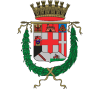The building stands on a site that was the lynchpin of the city defences raised by order of Ezzelino III da Romano, the tyrant who ruled over Padua from 1237 to 1256. The so-called Torlonga [High Tower], the largest of the two towers here, is the most significant remnant of these defensive walls.
After the fall of the tyrant, the fortifications were abandoned; only in the following century, with the establishment of the Carraresi family as the city’s rulers, were these structures once more used as a castle. The Carraresi had the two towers painted in a chequered pattern of red and white, and commissioned frescoes for the interiors. They were also responsible from the raised walkway, which was built to link the Castle to the centre of the city and to their own palace, which was the heart of political and military power at the time.
After the building of the Renaissance city walls, and the long period of peace that Padua enjoyed under the rule of the Venetian Republic, the Castel Vecchio [Old Castle], as it became known in the eighteenth century, had little strategic value. It was in this period that the architect Domenico Cerato draw up the plans for the conversion of the Torlonga for use as an Observatory, the origin of its present name of La Specula. In the following century other areas within the Castle were used as a prison.
Restoration work carried over the last few decades has brought to light important traces of the fourteenth-century painted decorations, and made it possible to fully appreciate one of the most important architectural witnesses to the history of Padua.
- DISCOVER
- LIVE
FOCUS
- GET INSPIRED
FOCUS
- INFO
- BOOK NOW












